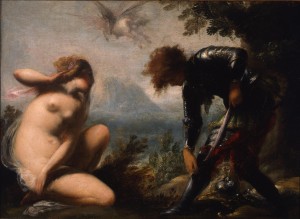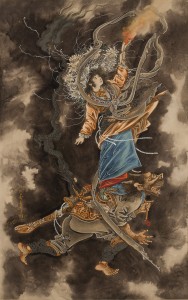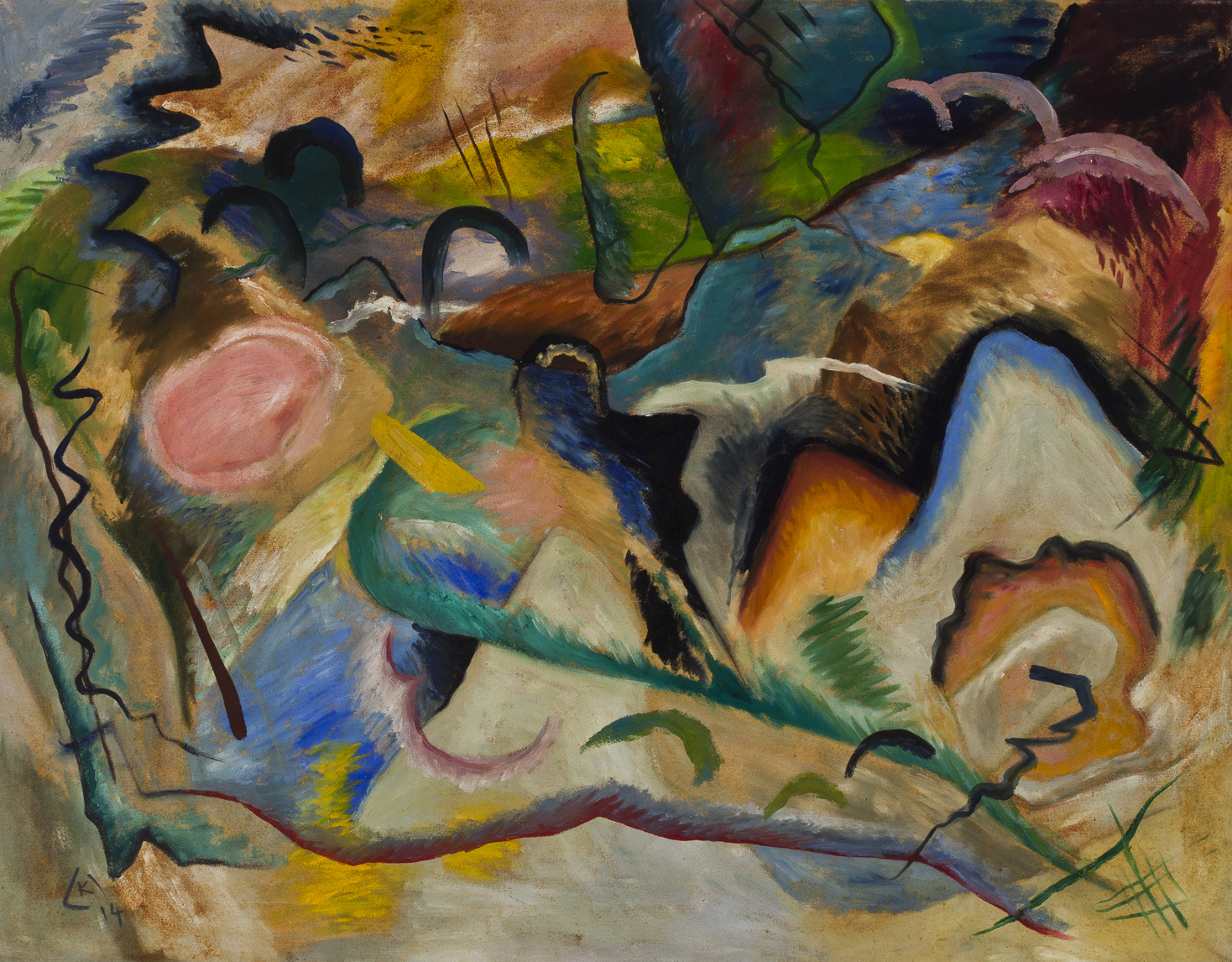There aren’t many places where a thin wall is the only boundary between the bodiless face of an angel from a medieval church and a large oil painting of six very hairy naked men. The seventeen micro-exhibitions that collectively make up the “Objects and Voices” exhibit at the Smart Museum of Art vary significantly in style, time period, and place of origin, but their curators all share a relationship to the Smart. In the museum’s special fortieth anniversary exhibit, the collection of voices is immense, ranging from professional museum curators who discovered their passions years ago, to Chicago schoolchildren still in search of theirs.
Although the micro-exhibitions are dissimilar and the galleries are arranged for the casual wanderer, the exhibit as a whole is surprisingly cohesive—even the move from “Mark Rothko: From Nature to Abstraction,” curated by Russell Bowman, to “Between Two Worlds: Asian/American Modern Art,” feels natural. The Smart’s cleverly placed temporary gallery walls make each transition refreshing rather than disharmonious, and many of the curators kept interactions between disparate subjects in mind. In “Interaction: British and American Modernist Design,” curator Alice Kain explores not only the British and American Arts and Crafts movements, but also the role Chicago and the UofC played in housing it. There, Frank Lloyd Wright’s “Window,” geometrically enticing with brown leaded-glass accents, stands tall beside a series of ornate silverware and bowls.

The versatility of “Objects and Voices” speaks to the expansiveness of the Smart’s collections. It reflects the time curators spent digging through the archives. Wu Hung, a Smart Museum consulting curator, professor of art history, and director of the UofC’s Center for the Art of East Asia, curated the micro-exhibition “Rong Rong’s East Village,” which explores the progressive Chinese art developed in Beijing suburb Dashanzhuang, especially the photography of Rong Rong. He describes choosing which pieces to include as an exhilarating process. “I found this set of photography and it was important for me,” he says. “I know the photographer, and I teach a class [on him].” Every curator is equally passionate about his or her area of expertise.
The collection’s standout pieces were as varied as their exhibitions. Lorna Simpson’s “Three Seated Figures,” in the “Times and Places that Become Us” exhibition, is a triptych of nearly undistinguishable Polaroids of a seated, pregnant African-American woman from the nose to the knees which, together with precisely worded gold plaques (“her story,” “Prints,” “Signs of Entry,” “Marks,” “each time they looked for proof”), deftly suggest a story of abuse and a culture of cold empiricism. Jacques Callot’s “Les Misères et les malheurs de la guerre,” from “War Portfolios in Teaching,” consists of eighteen etchings, originally published in 1633, focusing on the experience of soldiers in wartime. While one portrays young men eagerly volunteering to fight, others show the same soldiers raiding a house, desecrating a church, and ultimately being brutally attacked by subjugated peasants.

One particularly engaging micro-exhibition was “The Museum Classroom: Responsive Art from Beasley Academic Center,” curated by Shannon Foster, her teaching artist Candice Latimer, and her fifth-grade class. After studying Alice Neel’s “The City,” Michiel Simon’s “Still Life with Fruit and Flowers on a Draped Ledge,” Jeff Donaldson’s “Victory in the Valley of Eshu,” and Chinese mingqi sculptures, the students created their own art pieces. In response to “Victory,” two groups used the original as a template, and replicated the objects portrayed: a man wearing suspenders with his arm around a woman, with a distinctive eye surrounded by petals in the foreground.
Rather than simply echoing the original, the students’ new versions emphasized the less obvious details of the screenprint. The students’ liberal use of colorful, nearly pointillistic dots highlights the vividness of the original. The block letter “Victory” spelled out on the bottom of the original is nearly undetectable, but it dominates the students’ versions. In the pupil of the eye, two figures pose self-consciously, but one group opted to forgo the original composition, and instead painted two smiling adults with a smiling child between them. All the figures sport blue shirts with reflective pink hearts in the center. On their shirts, words like “honest,” “love,” “gentle,” and “beauty” are bold in black paint. Rather than capturing the look of “Victory,” the students extracted and re-expressed its underlying emotion.
“The Museum Classroom” serves as a good representation of “Objects and Voices” as a whole—an unexpected plurality of expressions that forms, somehow, a unified patchwork. From fifth-graders to Wassily Kandinsky, the range of art is huge at the Smart right now, but each micro-exhibition is linked by the excitement and expertise of its curator. The miscellany of voices unifies the exhibitions in a celebration of diversity in artistic expression.
Smart Museum of Art, 5550 S. Greenwood Ave. Through June 21. Tuesday-Sunday, 10am-5pm; Thursday, 10am-8pm. (773)702-0200. smartmuseum.uchicago.edu

